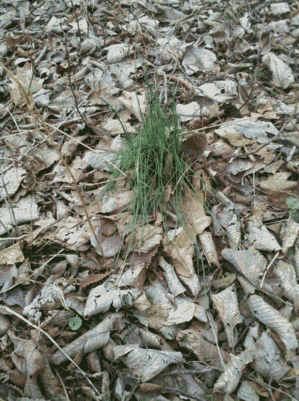Wildcrafting: Wild chives, a great beginning

Wild Chives found at Barton Dam
Linda Diane Feldt | Contributor
Look in moist, sunny areas, in the woods or nearby. They will look like a tuft of grass from a distance. Right now they are mostly alone, the bright green contrasting with the fallen leaves or bare earth. A brighter green than the slowly growing grass, they are round and not flat like grass, and softer as well.
Pick a few, and smell the oniony chive aroma. That smell must be present or they are not chives. Pick a lot, once you have identified them. You have found Allium schoenoprasum, the wild chive.
Once you have them home, use them as you would the cultivated chive. Mix with sour cream for potatoes, put them in a salad, garnish a vegetable dish, mix them with butter on toast. Mix butter, garlic and chives and slather onto slices of bread which you then wrap in aluminum foil and bake in the oven. Try them mixed into your regular pot greens or baked in a casserole. They are a great garnish for egg dishes, refried beans and rice dishes. Use a handful in place of onions. Use them anywhere a little visual green would help, and anywhere an oniony flavor would be welcome.
If you have lots, you can dry them in a slow oven for 1-2 hours (depending on the age and thickness). Just spread them on a cookie sheet and leave the oven at 200 degrees or less. Check every five to 10 minutes after the first 45 minutes. Once they are thoroughly dry and cool, store in a jar with a tight lid. The flavor will last at least a year.
Another unique way to preserve and use chives is to make them into an herbal vinegar. You can use the chives, and it is an even better way to use the flowering tops, which are also edible. Just fill a clean glass jar with the chives or flowers to the top, but don't stuff them in. Pour in apple cider vinegar and use a plastic lid. Metal reacts with the vinegar and imparts a bad taste. Label the jar; it is easy to forget what you've done.
Leave the jar in a cool dark place for six weeks, strain out the plant material and discard, and store the resulting flavored vinegar. Not only is it tasty, but the minerals from the plant have been pulled into the vinegar and are now very bio-available for your consumption. Use this vinegar combined with oil as a dressing or flavor rice dishes with it. I love to make it into salad dressing with tahini and other ingredients.
You can also just enjoy a strand or two of wild chives as a taste treat as you walk through the woods. Lots of flavor, and easy to enjoy.
Linda Diane Feldt is a local holistic Health Practitioner and herbalist. You can follow her wildcrafting ideas on twitter, or find more information on her Web site.


Comments
Person's Pursuit
Fri, Apr 23, 2010 : 1:01 p.m.
I have LOTS of chives. We bought our house just before winter and this spring were surprised with an extreme amount of chives. I use them in cooking every night but now I know what to do with the excess (can't waste them!). Thanks for the tips! Person's Pursuit: making life better Saving Money, Living Greener, Having a Great Life! www.personspursuit.com
Tammy Mayrend
Wed, Mar 31, 2010 : 7:51 p.m.
I HAVE to go find these, my kids are chiv-a-holics. They come in from the yard on a daily basis with chive-breath! We make chive-vinegar but with the chive blossoms. Yummy!!!